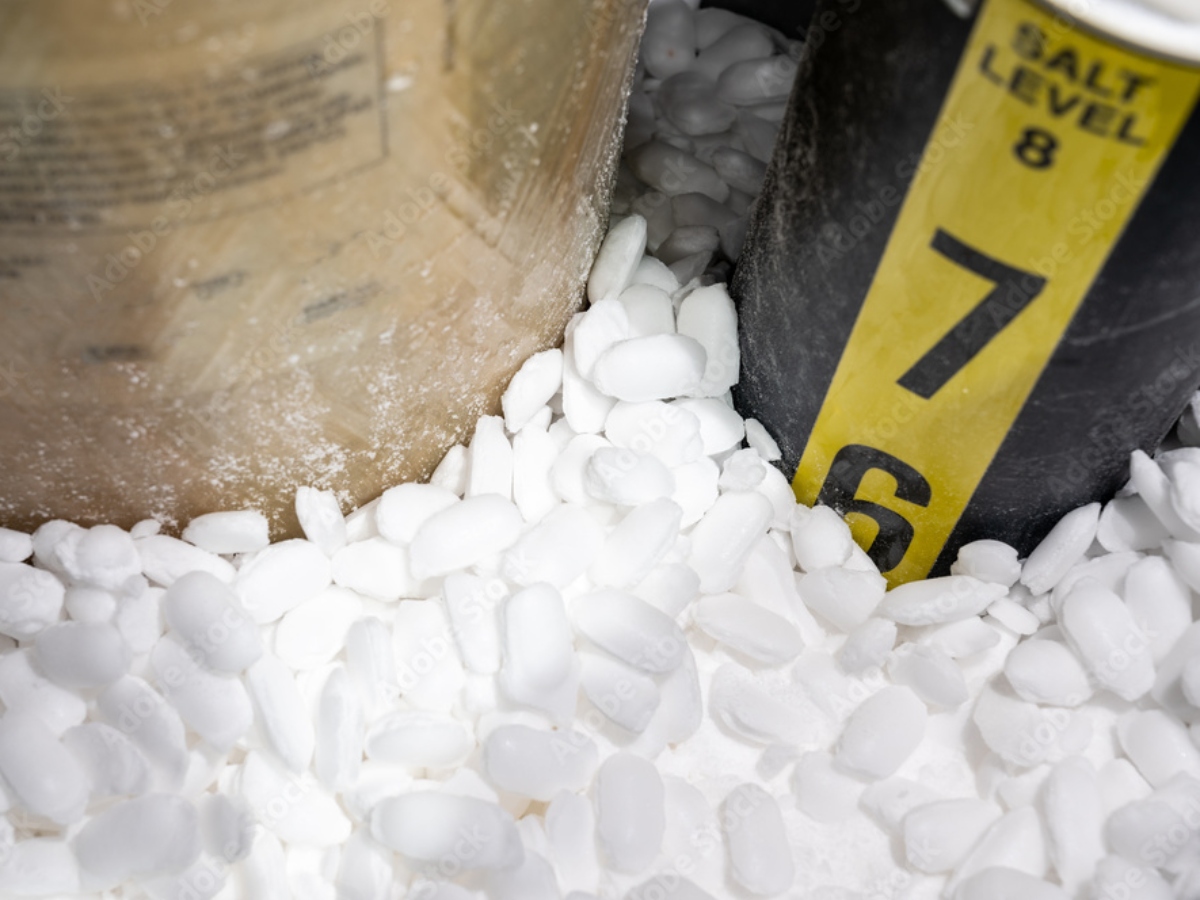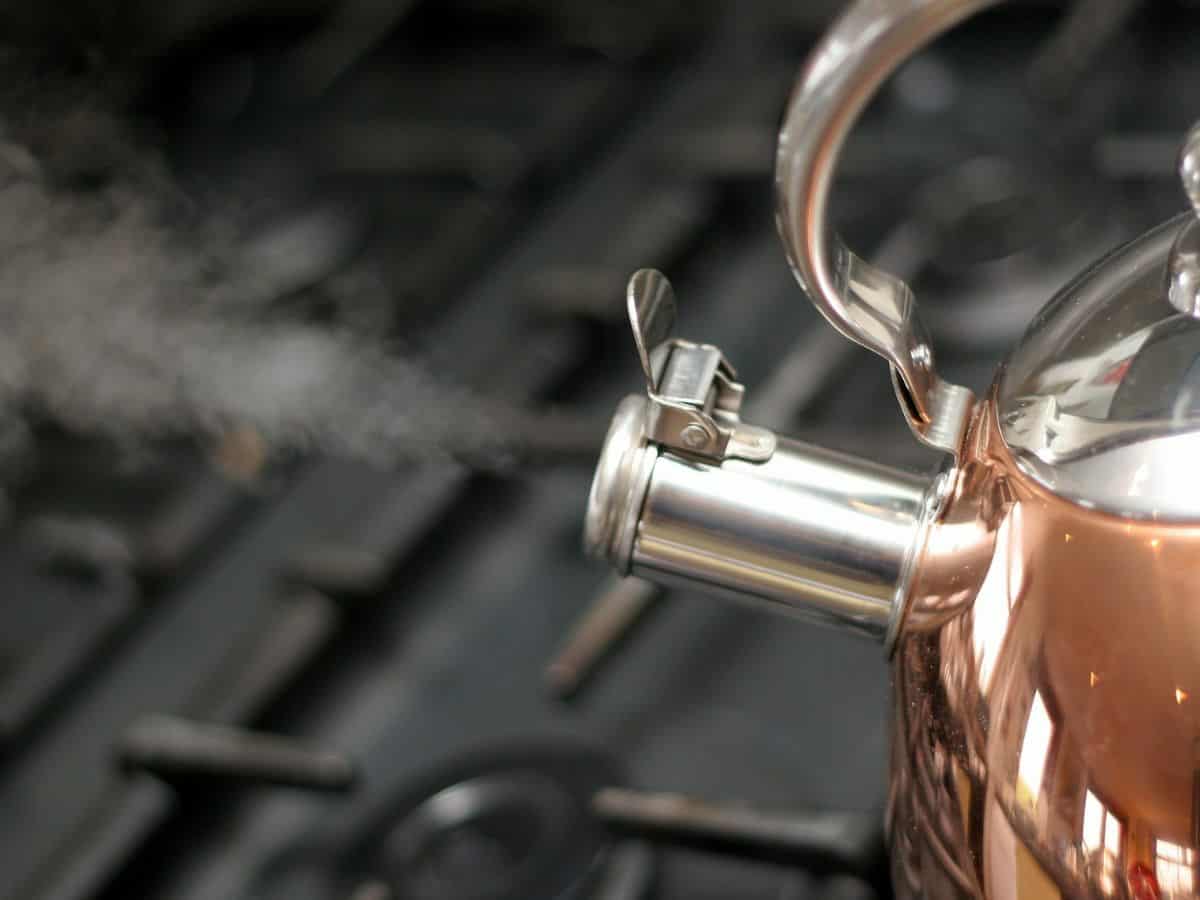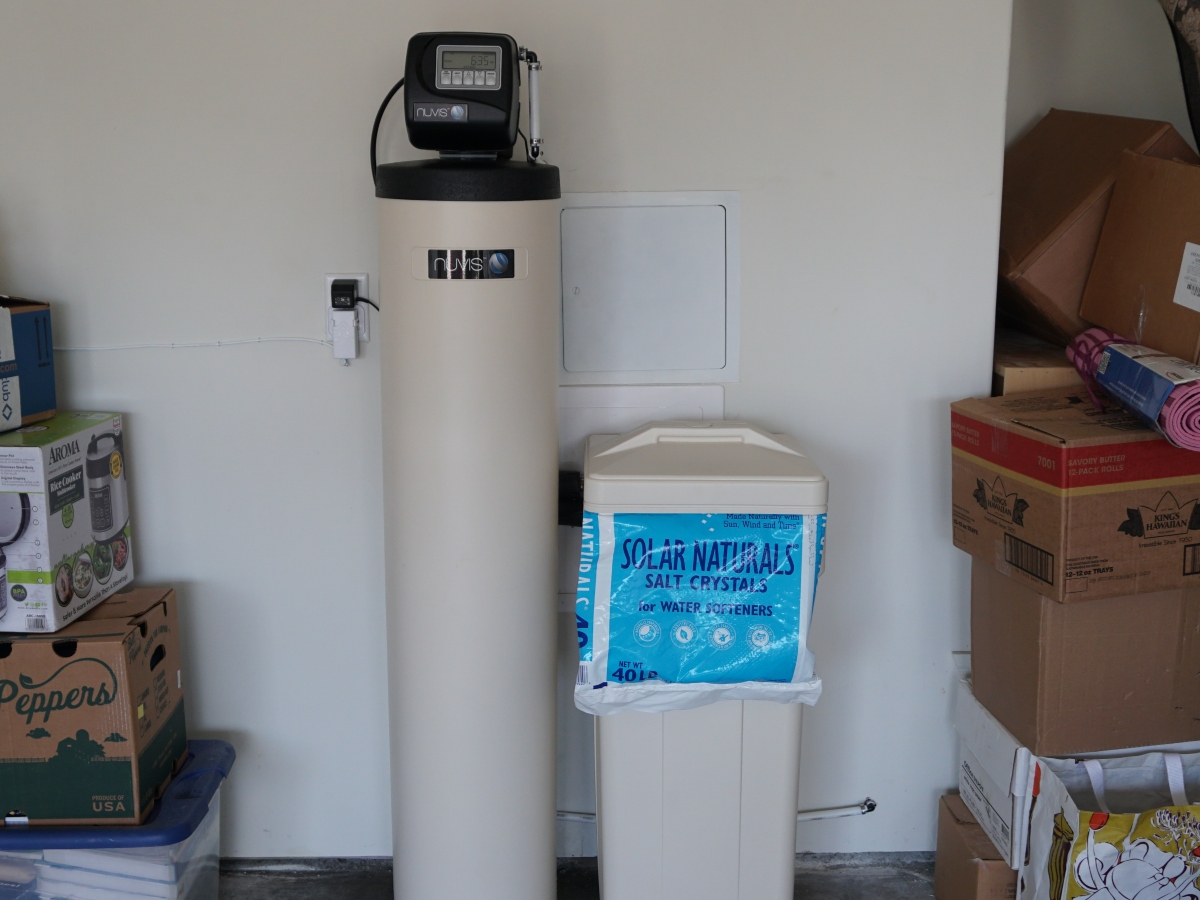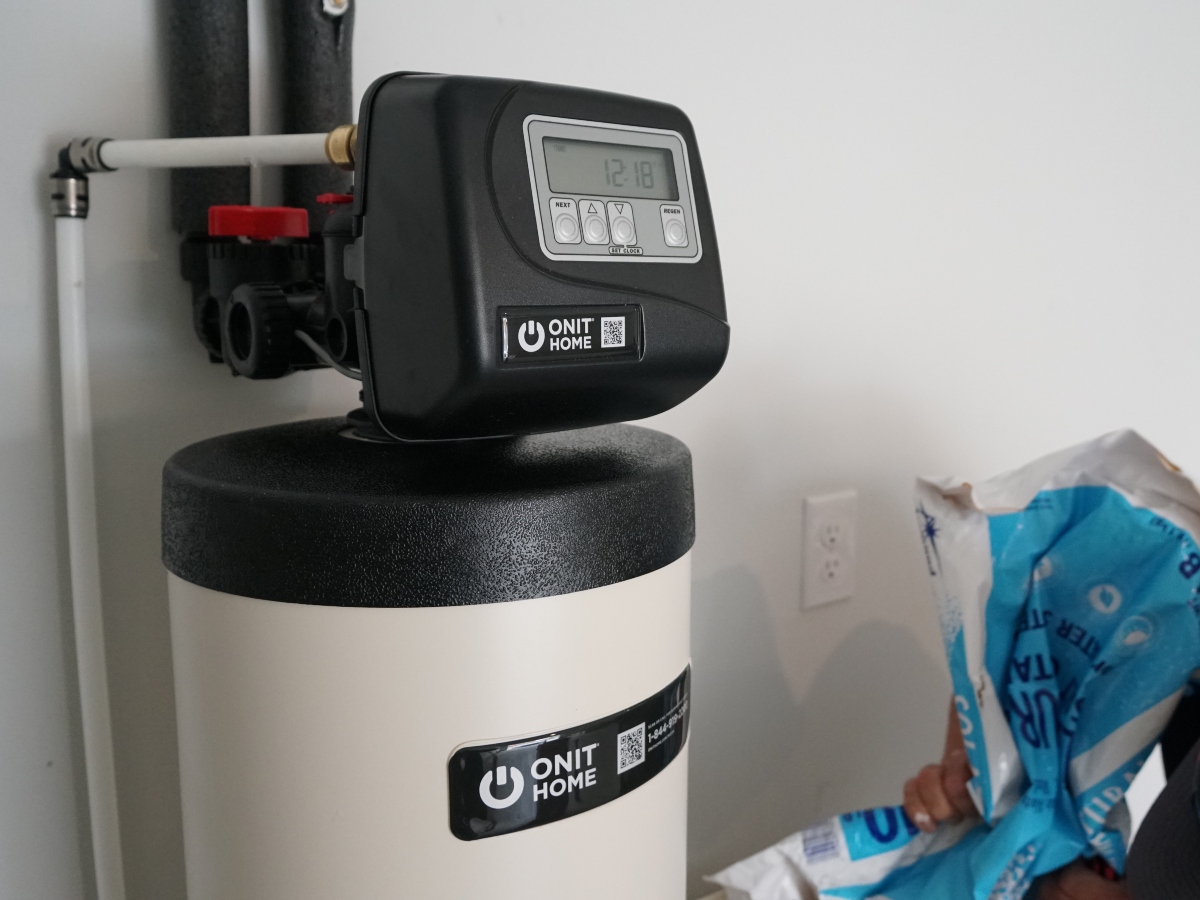A water softener is essential if you live in a place with hard water. Maintaining the water softeners helps keep them at peak performance. One way to ensure this is by periodically adding salt to the brine tank. So, how many bags of salt for water softener do you need?
On average, you’ll need about one 40-pound bag of salt for your water softener per month. However, this amount is based on a household of four and a water hardness level of 7–10 grains per gallon (GPG).
Let’s dive deeper to understand how many bags of salt you need for your water softener and the factors that may affect this number.
How Many Bags of Salt for Water Softening?
With a well-sized water softener, a home with 3-4 people and a water hardness level of 7-10 GPG uses around a 40-pound bag of salt per month, on average. This translates to around 10 lbs per week and 12 bags each year. However, the number of bags you’ll need depends on many factors besides household size and water hardness level. These factors include salt purity, water usage, and regeneration frequency.
How Many Bags of Salt for Water Softener Do I Need to Buy per Month?
A water softener for a household of four will require one bag of 40 lbs. of salt each month. So you will need to buy one bag each month. However, there are months when your water usage might increase, meaning you’ll use more salt, while in others, the usage might be lower than usual. To be on the safer side, ensure you always have 1- 2 extra bags on standby.
If you want to buy salt enough for all year round, buy 12 bags of 40 lbs bags, plus 2-3 extras.
How Many Bags Should I Buy When I Install a Water Softener?
When you buy salt for your new water softener, buy 3-4 40 lbs bags. First, add half or three-quarters of one bag for testing. This ensures that when you put salt in the water softener, it will nicely cover the water. Once your water softener works correctly, fill the salt halfway or one-quarter full. Roughly, you’ll use three bags the first time you get a new system.

How Many Bags of Salt Do I Need to Fill My Brine Tank?
Most people prefer adding two bags to fill up the brine tank. Generally, this can run for two months before needing a top-up. However, you can still top up one bag of salt each month. You need to ensure every time you add salt; it doesn’t exceed one-quarter full (4-6 inches from the top of the tank.)
An excellent rule of thumb is to keep salt above the water level. This doesn’t mean adding salt every time the system regenerates; it’s important to let water overtake the salt before adding more to prevent salt bridging. It’s important to note that the total number of bags you’ll need to add to your brine tank depends on water hardness, water usage, and water softener efficiency. Furthermore, newer water softener models are more efficient than old ones, so they might use less salt.
What Factors Affect How Many Bags of Salt I Need for My Water Softener?
Several factors affect your water softener salt usage, this includes:
- Brine tank size: Water softener comes in different sizes. The bigger the brine tank, the more salt it can hold, meaning it can increase the number of bags you need.
- Salt purity: Salt purity affects the quantity you need. Different salt types, such as pellets, crystals, or block salt, have varying purity levels. Salt with a higher purity level results in less usage than lower purity salt.
- Water hardness: The harder your water, the more hard minerals are removed, meaning the resin beads need recharging more often. This results in your water softener requiring more salt than water with lower hardness levels. For example, a home with a water hardness below 10 GPG might use less salt than one with a water hardness above 10 GPG.
- Water usage: A household with high water usage will deplete salt quickly, requiring more frequent refilling.
- Water softener efficiency: A water softener’s efficiency and effectiveness in softening water can impact salt usage. A well-maintained and properly functioning water softener will use less salt than a less efficient system. Any softener or plumbing system leakage can also increase salt usage. In addition, newer water softener models are more efficient than older ones, requiring less salt.
When Should I Add Salt to My Water Softener?
It’s easy to forget to add salt to your water softener, especially when busy. Here are signs that your water softener needs salt:
- Low salt level indicator: Many softeners come with a low salt level indicator to notify you that the salt level is low.
- Return of hard water symptoms: If you notice some indicators of water hardness that were present before installing your water softener, the salt might be too low, or the tank has no salt. These may include spots on your utensils, less water pressure, dry and itchy skin, or reduced soap lathering.

How to Maintain Your Water Softening System
Maintaining your water softener at optimal performance levels ensures you get soft water in your home. As a result, you will prevent mineral buildup in your pipes, fixtures, and appliances and reduce soap spots and film on glassware and sinks. Furthermore, using soft water will lengthen the life expectancy of most of your appliances.
Here’s how to ensure you keep your water softener in tip-top shape:
- Use the correct type of salt: Use the highest quality salt to ensure your water softener works efficiently. Also, ensure to follow the manufacturer’s guidelines.
- Check salt levels: Check the salt level at least once monthly to ensure it is optimal.
- Check salt bridges: Salt bridges happen when a hard crust forms and prevents the salt from mixing with water. Break up the layer using a broom handle to ensure it mixes well with water.
- Remove mushing: Salt can also form a slushy layer at the bottom of the tank, delaying the brine flow and slowing the regeneration process. The best way to remove salt mushing is to flush the brine tank.
- Clean your brine tank: Cleaning your brine tank annually can help prevent impurity buildup from the salt. Choosing the best water softener salt with the highest purity level can also prevent your system from clogging.
- Check the valves: Testing the valves for the water softener systems is good to ensure they work. Turning the valves on and off is an excellent way to ensure they are in good condition.
- Get professional maintenance: Most water softening systems last 10-15 years. No one wants to mess with such an investment. Right? While you ensure you maintain your softener efficiency by following the above recommendations, getting a professional for yearly checkups and servicing is also crucial.

Frequently Asked Questions (FAQs)
Below are frequently asked questions about salt and water softeners:
How Often Should the Water Softener Be Regenerated?
A water softener regenerates once per one or two weeks. Some generate daily or a few times a week. Water hardness, tank size, and water usage are just some factors that determine regeneration frequency.
How Do You Check Water Softener Salt Levels?
Checking salt levels is easy. Open the lid of your brine tank and look inside. If you see the water level, it’s time to add more salt. Ensure the salt hasn’t formed a bridge if you don’t see the water level.
How Frequently Should You Check the Salt Level?
Typically, check the salt levels in your brine tank every 4-6 weeks. Checking salt levels periodically ensures that your brine tank will never run out of salt. Salt in the brine tank means your water softener works optimally, meaning soft water in your home throughout.
Why Do Water Softeners Need Salt?
A water softener is made of resin beds that help remove minerals such as calcium and magnesium that cause water hardness. Over time, the resin beds become saturated with these hard minerals, reducing their effectiveness. The minerals are removed through ion exchange. Water softeners need salt for regenerating resin beds, flushing out minerals that would otherwise build up in the system. And this is where water-softening salt comes in handy by creating a brine solution.
Need High-Quality Water Softener Salt?
So, how many bags of salt for water softener do you need? If you live in a household of 4 members and your water hardness is below 10 GPG, one bag of salt per month is enough. However, many other factors determine how many bags of salt for water softener you need: salt purity, water usage, and the efficiency of your water softener.
High-quality water salt is crucial for ensuring the proper functioning of your water softener, and at ONIT Home, that’s what we offer our customers.
We also sell water softeners at an affordable price. One benefit of buying from ONIT is that we can help you size the system depending on your home’s unique needs! Call us now at 1-833-433-0331 to make your order, or fill out our online form to get started. Our dedicated experts are ready to help you pick the right size water softener so you can say goodbye to hard water problems. We’re always ONIT!



